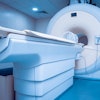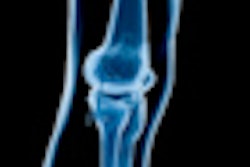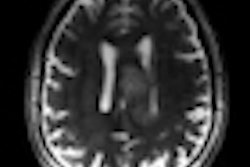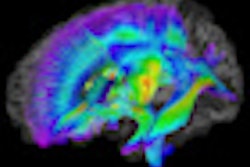Knee MRI scans often change clinical diagnosis and patient management -- especially when patients present with lateral joint line pain and/or tenderness -- while also improving diagnostic confidence, according to research presented earlier this month at the American Academy of Orthopaedic Surgeons (AAOS) meeting.
Sunny Patel of the Cleveland Clinic and colleagues investigated how frequently knee MRI changes clinical diagnosis and patient management, whether these changes relate to specific patient or ordering physician characteristics, and how knee MRI affects diagnostic confidence.
For the study, three orthopedic surgeons and three sports medicine physicians from a single multispecialty practice completed surveys on patients who received knee MRI scans between June 2010 and January 2011, both before and after the MRI exam. The pre-MRI survey recorded factors such as the patient's clinical history, symptoms, physical exam findings, diagnosis with confidence level, and planned patient management. The post-MRI survey recorded diagnosis with confidence level and planned patient management.
Patel's group calculated the frequency of change in primary diagnosis and management, as well as the change in diagnostic confidence level between the two surveys.
The study used data from surveys of 93 patients (48 women and 45 men), with 55 patients evaluated by orthopedic surgeons and 38 patients by sports medicine physicians. Patel's group found that MRI changed the primary diagnosis in 29.3% of cases and patient management in 25.3% of cases.
The scans also changed management in 34.6% of cases (18 out of 52) where a nonsurgical treatment was planned, usually to surgery or referral to an orthopedic surgeon; eliminated the need for surgery in 13.6% of cases (three out of 22); and changed the type of surgery in 12.5% of cases (three out of 24), according to Patel.
Change in diagnosis had a statistically significant correlation with findings of lateral joint line pain in the patient history and lateral joint line tenderness at physical exam, the group also found. However, change in management did not have a statistically significant correlation with any specific patient or physician characteristic.
Overall, MRI increased clinicians' confidence levels in the primary diagnosis by 10.6%. Clinicians' confidence levels increased by 15.8% when the diagnosis was changed after MRI, and by 8.7% when the diagnosis was unchanged after MRI. When the diagnosis was changed, confidence in pre-MRI diagnosis decreased in all but three cases, usually to zero, Patel said.
"Our study found that knee MRI changed clinical diagnosis and patient management while at the same time improving diagnostic confidence," he said. "And this occurred even when the [initial] clinical evaluation was performed by a highly specialized physician."



.fFmgij6Hin.png?auto=compress%2Cformat&fit=crop&h=100&q=70&w=100)





.fFmgij6Hin.png?auto=compress%2Cformat&fit=crop&h=167&q=70&w=250)











